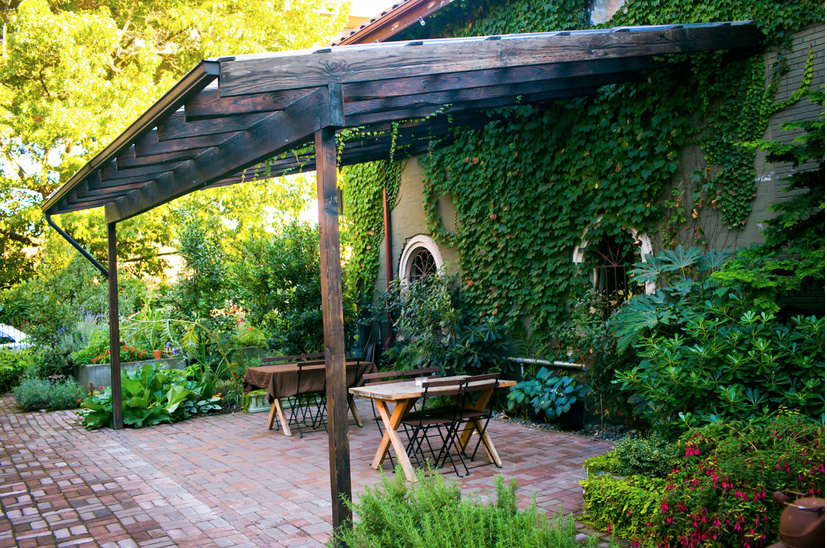by Scharlene Fulmer
“Ciao!” I shouted to the gondoliers as they glided past, their passengers waving up to me as I stood on the balcony of my room in a beautiful old hotel on the Grand Canal. I sang along with their romantic songs while I watched the many gondolas traverse from one bridge to another, some holding couples who were kissing as they passed my window.
It was exactly what I wanted to experience during my first visit to Venice. A grand view of the Grand Canal!
My friend and I had only three days in Venice before we were to embark upon a ten day cruise of the Mediterranean aboard the Oceania. We spent those days walking the streets and crossing the canals over raised bridges, ever aware of the residents as they attended to their daily tasks. I especially noticed the local women—what they were doing, where they were going.
One who stands out in my memory was about 60 years old, dressed as most Venetian women are—in a dress, full coat, nylons and well-worn black shoes. She walked with purpose, ignoring the tourists, as her heels clicked loudly on the cobblestones. She was returning home from the street market, rushing past with her plastic bags of vegetables, one with a long loaf of bread extending out. It was dinner time, and she was in a rush to get started cooking her meal.
I wondered which of the very old apartment buildings surrounding the square was hers. As I looked up at the windows that were open to catch the late afternoon breeze, it felt like we belonged there, if only just for a minute.
Each day we walked aimlessly, somehow trusting we wouldn’t get lost. One of the many churches in Venice that we passed beckoned me to enter because it had door with a sign that read “Santa Lucia.” It was the home of this legendary virgin martyr’s reliquary. We respectfully approached the altar in front of the glass coffin which held her remains.
The song, “Santa Lucia” rang in my ears as we gazed at the great art all around. This church was not populated by tourists; it was a neighborhood church attended by all the locals we saw outside—sitting on benches or under trees—men smoking and gesturing as they talked and shared their day. That church and its priests fashioned the core of these people’s lives.
We actually did get lost once, though, early on a Sunday morning. We took a side street thinking we were about to enter St. Mark’s Square. We wandered for a while up narrow streets in what felt like a maze. We came upon a group of actors getting ready to perform a play for the neighbors in a tiny courtyard. We watched as they set up their stage and chairs and draped colorful backdrops of blankets on a clothes line. We felt like we were intruding, but we stayed a little longer to see just the beginning of the play.
After asking for directions again to St. Mark’s, we ended up at another church square where a renowned artist Missiaja had his workshop. He was a carver of small wood figures—characters of the 500 year-old Commedia del Arte. Each figure was carved and painted in the likeness of one of the sixteen cast members. The scenarios of this traditional play change but all have obvious heroines, heroes, cuckolds and villains.
The plays are loved and well-attended all over Italy, often performed outdoors in the summer. Playgoers applaud the heroes and hiss at the villains. The artist wasn’t present, but we were invited back to his private studio to learn more about his work. Apparently he is an internationally known artist who has held exhibitions around the world. I wanted to own a few of his exquisite carvings, so I splurged and bought four of the cast members: Columbina, Pantalone, Advocate and Arlecchino.
We then crossed the courtyard and silently entered the church where a mass was in progress. The young boys’ chorus, dressed in traditional choir robes with white collars, was singing sweetly as the priest administered communion. The walls were adorned with works from some of the most important artists of the 16th and 17th centuries, and the glass windows depicting religious events were created by great Venetian glass artists.
It was truly a privilege to intimately experience some of what the citizens of Venice experience each day as they practice their faith in the face of many hundreds of years of history, architecture and fine art.
Venice deserves another visit…we never did get to St. Mark’s Square!
* * * *
For More Information:
Missiaja’s studio d’arte is in Schola San Zaccaria, Campo San Zaccaria. Walk
down Via XXII Marzo from Plaza San Marco to Campo S. Maurizio 2664. We
didn’t take this route (I have no idea what route we did take either!), but I
saw these directions on his map which I found after we came upon the
shop.
The Hotel Principe, Lista di Spagna 117, Venice. It is a Gothic building dating back to the XV century, one of the first palaces on the Grand Canal. It is a block from the railroad station which makes it easy for folks arriving by train. We didn’t…we used a water taxi from the
airport, and again to the ship, the Oceania Regatta.
Santa Lucia is the name of the plaza with the church which holds the
reliquary of Santa Lucia. It was across the bridge on the opposite side of our hotel. It is on the way via
footbridges, following signage to get to Plaza San Marco. We didn’t go that
way either… we wandered.










